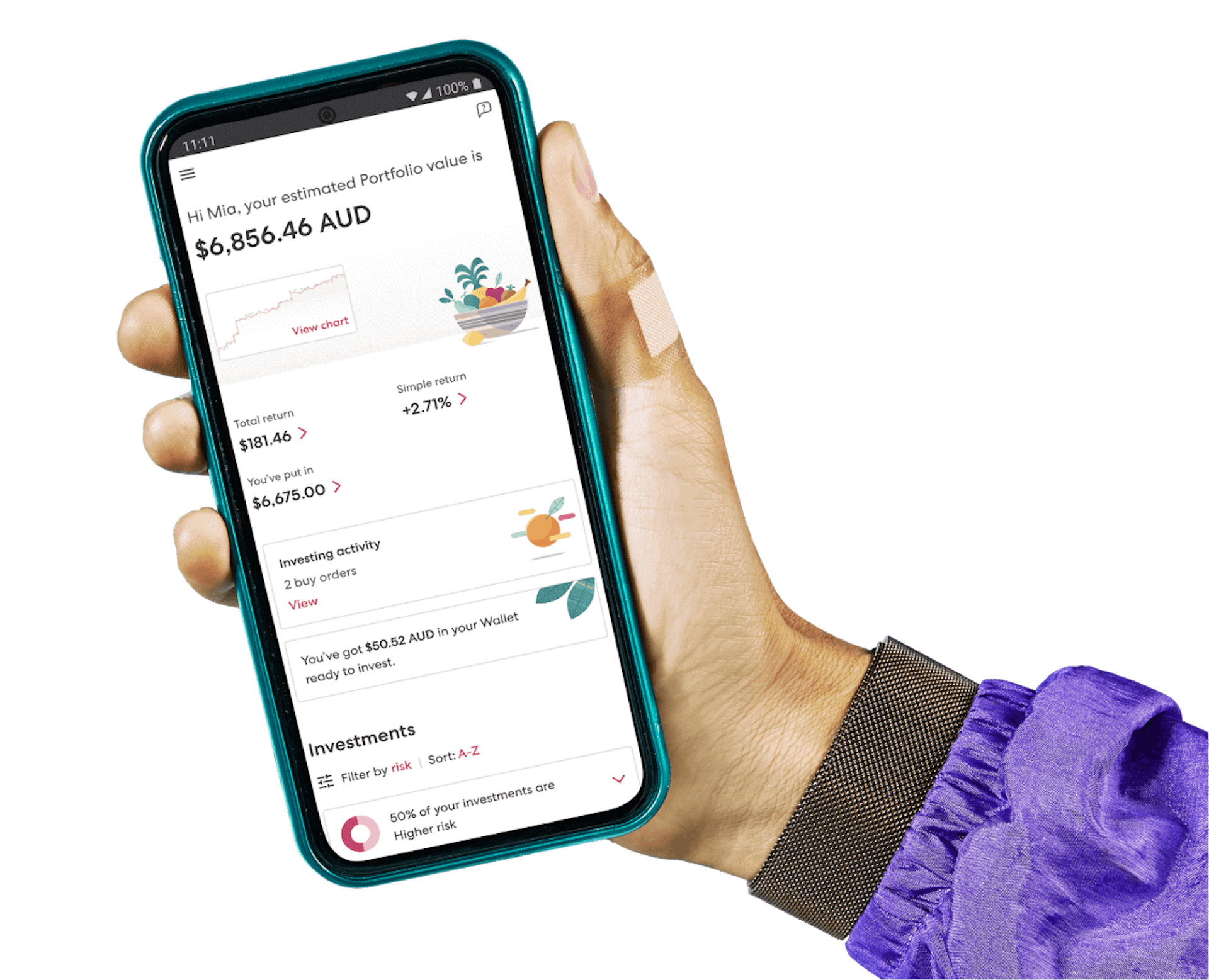How an index fund works
In the investing world, the word ‘index’ pops up in a few different places. First, there’s an index, which is a list of investments. And there are also index funds, which are investments that try to match the performance of an index.
But what does this mean in practice? And why do index funds that track the same index sometimes have different returns? That’s what we’re going to work through today.

What’s an index?
Put simply, an index measures the performance of a group of assets in a standardised way. An index provider, such as S&P Dow Jones Indices who run the S&P 500 index, sets the rules for what investments are listed in an index. You might have heard of these well known indices:
S&P 500 index, which includes 500 large US-listed companies
Dow Jones Industrial Average, which includes 30 large US-listed industrial companies
S&P/ASX 200 index, which includes 200 large ASX-listed companies.
There are plenty of others, too! And they all track different groups of investments based on different sets of rules.
How weighting is calculated
The index provider sets the weighting of each investment in the index—in other words, how much any one investment in the index can affect the overall value of the index. There are different ways that weighting is set, so it depends on the index:
A price-weighted index takes into account each asset’s market price, so higher-priced assets have a bigger share in the index than lower-priced assets.
A market-cap-weighted index looks at the total money invested in an asset (the market cap) to determine its share in the index.
An equal-weight index gives the same weighting to each asset it tracks, regardless of price or market cap.
Let’s look at a couple of examples!
S&P/ASX 200 index
The S&P/ASX 200 multiplies the share price of each of the 200 companies in the index by the number of shares it has available for public trading—this gives each company’s free-float market capitalisation, a measure of its size.
This is then divided by the ‘Divisor’, a number that’s adjusted to keep the value of the index consistent—even as companies go through corporate actions. The result is the weighting factor for each company in the index.
Weighting by free-float market cap means that movements in the share prices of large market cap companies tend to have a bigger impact on the index’s value than movements in the share prices of small market cap companies.
Dow Jones Industrial Average
Compare the S&P/ASX 200 weighting to that of the Dow Jones Industrial Average. It adds up the share price of 30 companies, and simply divides it by a magic number called the ‘Dow Divisor’. It doesn’t account for a company’s free-float market cap.
This means if a company has a small free-float market cap but a high share price, changes in that share price will have a larger impact on the index’s value than a company with a large free-float market cap but a low share price.
Index funds
Here’s the thing about an index—you can’t actually invest in them directly, because they’re just a list. But, you can invest in index funds.
Index funds are investments that track an index. An index fund will try to match the performance of a specific index by investing in the things on that index.
Index funds often have low fees, especially when compared to their close cousin, actively managed funds. Actively managed funds have fund managers who pick specific investments—and these people need to get paid! This often results in these funds having higher fees than index funds.
Index funds are passive. Since they just follow a set of rules, they tend to track the movements of the overall market.
On the other hand, actively managed funds try to beat the market. The fund manager’s investment choices affect whether your returns are lower or higher than the market.
Why an index fund doesn’t always match its index
Index funds are based on an index, but they can’t always track it to a T. This happens for a few different reasons.
Tracking errors
Sometimes the investments within an index change. When a change happens, an index fund manager might need to buy shares in an investment that’s been added, or sell shares in an investment that’s been removed. This is called a rebalance.
If there are no sellers for a share the index fund wants to buy, or no buyers for a share the index fund wants to sell, the composition of shares it owns may end up differing from the index it’s tracking. This will make its returns different from that of the index.
Fees
Index fund managers charge fees to cover their costs. These fees can vary wildly between different fund managers—even though they might be tracking the same index. These differences in fees and active management can impact your returns.
Weighting
An index fund might apply additional weighting that means their returns are slightly different from the returns of the index it tracks.
For example, some index funds apply weighting so that they never invest more than a certain percentage of the fund’s total value in a single company. These funds provide more equal weighting to all the companies on the index, rather than following the index based on the size of the companies within it.
The point is, different funds have different elements which can impact your returns.You might want to look at these elements when you’re deciding whether to invest in an index fund.
Wrapping up
You can use index funds to diversify your portfolio and invest passively. But, not every index fund is created using the same rules. That’s why due diligence is so important, even with investments like index funds.
Make sure you read up on the index fund you’re considering. Weigh it against your goals and values, then make a decision about what to invest in and how much to invest.
Ok, now for the legal bit
Investing involves risk. You aren’t guaranteed to make money, and you might lose the money you start with. We don’t provide personalised advice or recommendations. Any information we provide is general only and current at the time written. You should consider seeking independent legal, financial, taxation or other advice when considering whether an investment is appropriate for your objectives, financial situation or needs.
Join over 600,000 investors



